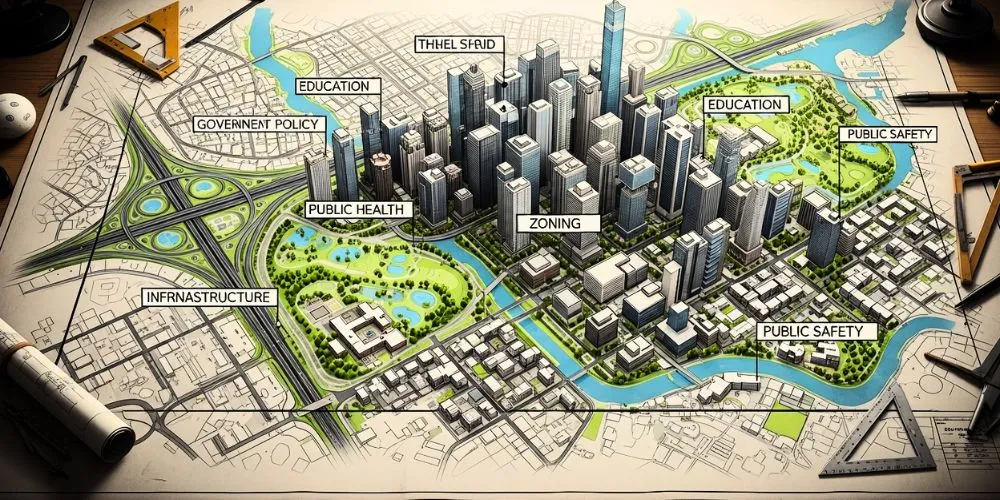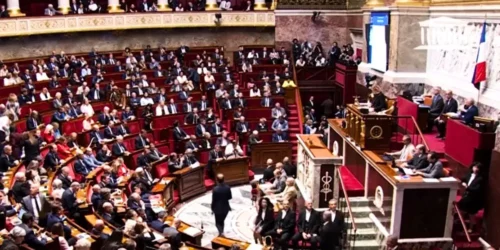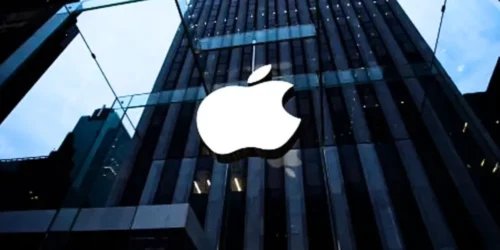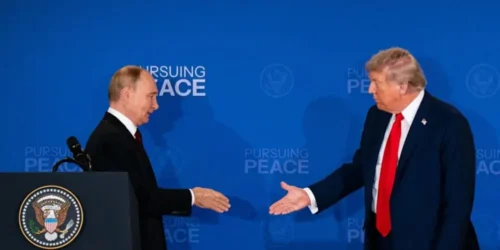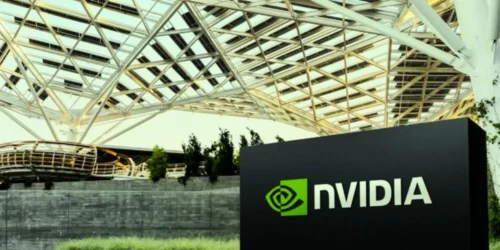We often think of government policy as an abstract and distant force, something debated by politicians in faraway capitals and summarized in dense, unreadable reports. But the reality is far more intimate. Government policies are the invisible architecture of our society, a complex web of rules, incentives, and prohibitions that profoundly shape our daily lives. From the quality of the air we breathe and the safety of the food we eat, to the cost of our education and the accessibility of our healthcare, these decisions form the foundation of our opportunities and constraints. This analysis will pull back the curtain on the policy-making process, examining how ideas become law, the tools governments use to achieve their goals, and the critical, often contentious, trade-offs that define the modern state.
From Idea to Implementation: The Policy Lifecycle
A government policy doesn’t spring into existence fully formed. It undergoes a complex lifecycle, a journey from a nascent idea to a concrete program that impacts citizens’ lives. This process is rarely linear and is subject to intense political and social pressure at every stage.
Agenda Setting: The Battle for Attention
The first and most crucial stage is getting a problem onto the government’s agenda. With countless issues competing for limited attention and resources, this is a fierce battle. A problem may gain prominence through a dramatic event (such as a natural disaster or a financial crisis), the slow accumulation of data (as seen in rising inequality or declining public health metrics), or the tireless advocacy of interest groups, social movements, and political champions. Only a fraction of societal problems ever make it onto the formal policy agenda, making this stage a powerful filter.
Formulation and Legitimation: Crafting the Solution
Once a problem is on the agenda, policymakers begin formulating solutions. This involves a complex dance of research, consultation, and negotiation. Experts in government agencies draft proposals, legislative committees hold hearings to gather testimony, and lobbyists representing various interests push for their preferred outcomes. The chosen policy must then be legitimized, typically by passing it into law through a legislative vote or enacting it via executive order. This step gives the policy the formal authority and resources it needs to be implemented.
Implementation and Evaluation: Where the Rubber Meets the Road
This is arguably the most critical and most difficult stage. A perfectly designed policy can fail spectacularly if poorly implemented. Implementation is the work of the bureaucracy—the public agencies and civil servants tasked with turning the words of a law into a functioning program. This can involve creating new regulations, disbursing funds, or providing services. Finally, the policy must be evaluated to determine if it is working as intended. This feedback loop, in theory, allows for adjustments and improvements, though in practice, political considerations can often hinder honest evaluation.
The Diverse Toolkit of Government Action
To achieve their objectives, governments have a wide array of policy tools at their disposal. The choice of tool depends on the nature of the problem, the political context, and the government’s underlying ideology.
Direct Provision: The Government as a Service Provider
One of the most direct ways a government can act is by providing goods and services itself. This includes foundational public services like national defense, the court system, and public education. It also encompasses building and maintaining infrastructure, such as roads, bridges, and public transportation. The rationale for direct provision is that these services are either “public goods” that the private market would not provide efficiently, or that they are essential rights that should be available to all citizens regardless of their ability to pay.
Regulation: Setting the Rules of the Game
Regulation is a powerful but less visible tool. Instead of providing a service, the government sets the rules that private individuals and corporations must follow. This encompasses a vast range of activities, from environmental regulations that limit pollution from factories and set emissions standards for cars, to financial regulations that dictate how much capital banks must hold, to safety standards for consumer products. The goal is to correct for market failures and protect the public from harm, though it often sparks debate about economic efficiency and personal freedom.
Fiscal Tools: The Power of the Purse
Governments wield immense power through their fiscal policies, which include taxation and spending. They can use taxes to discourage certain behaviors (like taxes on tobacco or carbon) or to redistribute wealth (through a progressive income tax system). On the spending side, they can use subsidies to encourage desired activities, such as providing grants for renewable energy development or tax credits for first-time homebuyers. These financial incentives and disincentives are powerful tools for steering the behavior of millions of individuals and firms.
The Inescapable World of Policy Trade-Offs
Every significant policy decision involves a trade-off. There is no perfect solution that benefits everyone and costs nothing. The art of governance lies in navigating these difficult choices, which often pit competing values and interests against each other.
Efficiency vs. Equity: The Core Tension
A central trade-off in policymaking is the tension between efficiency and equity. An efficient policy achieves its goal at the lowest possible cost, while an equitable policy ensures that outcomes are fair and just. For example, a highly efficient healthcare system might focus resources on preventative care for the healthy majority. Still, an equitable system would ensure that even those with rare and expensive diseases receive treatment. These two goals are not always mutually exclusive, but they are often in direct competition for limited public resources.
Short-Term Gains vs. Long-Term Investment
Democratic politics, with its constant election cycles, creates a powerful incentive for politicians to favor policies with immediate, visible benefits over those that involve short-term pain for long-term gain. It’s easier to win votes by cutting taxes today than by investing in infrastructure or education systems whose full benefits won’t be realized for decades. This short-term bias poses a fundamental challenge for addressing slow-moving crises, such as climate change or rising national debt, where the most responsible choices are often the least politically popular.
Individual Liberty vs. Collective Good
Many of the most contentious policy debates revolve around the appropriate balance between individual liberty and the collective good. Mandatory vaccination policies, for example, pit the individual’s right to bodily autonomy against the public health goal of herd immunity. Similarly, zoning laws that restrict what a person can build on their property are justified by the community’s interest in orderly development. Finding the line where one person’s freedom infringes upon the safety and well-being of others is a perpetual challenge for policymakers in a liberal democracy.
Unintended Consequences and Policy Failure
Despite the best intentions, government policies can and do fail. Sometimes they fail to solve the problem they were designed for; other times, they create entirely new problems. Understanding the dynamics of policy failure is crucial for effective governance.
The Law of Unintended Consequences
Complex systems, like a society or an economy, are notoriously difficult to predict. A policy designed to achieve one outcome can have a cascade of unforeseen effects. For example, a “tough on crime” policy that leads to mass incarceration might reduce crime rates in the short term but can also destabilize communities, create a permanent underclass of ex-offenders, and place a massive financial burden on the state for decades to come. Good policymaking requires a humble recognition of this complexity.
The Challenge of Implementation Gaps
A policy can look brilliant on paper but fall apart during implementation. This can happen for several reasons: the responsible agency may lack the necessary funding or staff, the rules may be too complex for citizens to comprehend, or local officials may resist a policy dictated by the central government. This gap between a policy’s intent and its actual execution on the ground is a common source of failure and public frustration.
Conclusion
Government policies are the silent, powerful forces that structure our world. They are the result of a complex, ongoing process of debate, compromise, and experimentation. From the grand strategies of national defense and economic management to the minute regulations governing the shape of a screw, these decisions collectively dictate the kind of society we live in. Understanding the architecture of policy—how it is built, the tools it uses, and the inevitable trade-offs it entails—is not just an academic exercise. It is the essential work of an engaged citizenry, for it is in the details of these policies that we find the true character and priorities of our nation.

